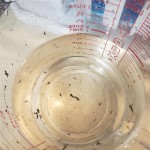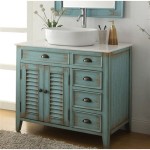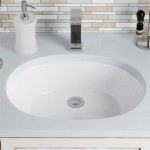Fixing a Smelly Bathroom Sink: A Comprehensive Guide
A persistent foul odor emanating from a bathroom sink can be an unpleasant and embarrassing issue. Several factors can contribute to this problem, ranging from simple buildup to more complex plumbing concerns. Identifying the source of the smell is the first step toward implementing an effective solution. This article provides a detailed guide to diagnosing and rectifying the common causes of a smelly bathroom sink.
Identifying Common Causes of Bathroom Sink Odors
Determining the origin of the smell is crucial for successful remediation. The odor could stem from various sources within the sink's plumbing system or even the surrounding environment. Here are some of the most common culprits:
Biofilm Buildup: This is perhaps the most frequent cause of bathroom sink odors. Biofilm is a slimy layer of bacteria, hair, soap scum, toothpaste residue, and other organic matter that accumulates on the inner surfaces of the drainpipe. This accumulation provides a breeding ground for odor-producing bacteria. The bacteria decompose the organic matter, releasing foul-smelling gases like hydrogen sulfide (which smells like rotten eggs) and other volatile organic compounds (VOCs).
Clogged Drain: Similar to biofilm, a clog in the drain provides an ideal environment for bacterial growth. Larger clogs, often composed of hair, grease, and solidified soap, trap stagnant water and organic debris. This blockage restricts water flow, allowing for increased decomposition and a more potent odor. The stagnant water itself can also contribute to the smell.
Dry P-Trap: The P-trap is a U-shaped pipe located beneath the sink. Its primary function is to hold water, creating a seal that prevents sewer gases from entering the bathroom. If the P-trap dries out due to infrequent use or evaporation, sewer gases can readily escape up the drain, resulting in a strong, unpleasant odor.
Ventilation Issues: Plumbing systems rely on vents to allow air to enter and equalize pressure as water drains. Blocked or improperly installed vents can disrupt this process, causing negative pressure that siphons water from the P-trap. This, in turn, leads to the escape of sewer gases.
Sewer Line Problems: In some cases, the odor may not originate directly from the sink itself but rather from a problem within the main sewer line. A cracked or damaged sewer pipe can leak sewage and release foul odors that permeate the entire bathroom, including the sink area. This is typically accompanied by other signs, such as slow-draining toilets or gurgling sounds in the plumbing system.
Overflow Drain Buildup: Many sinks have an overflow drain, a small opening typically located near the top of the basin. This drain prevents the sink from overflowing if the main drain is blocked. However, the overflow drain can also accumulate biofilm and debris, leading to odors, especially since it's difficult to clean effectively.
Plumbing Leaks: Undetected leaks, even minor ones, can create a damp environment that fosters mold and mildew growth. Mold and mildew release their own distinct musty odors, which can contribute to the overall smell emanating from the sink area. Leaks can occur anywhere in the plumbing system, including supply lines, drainpipes, and faucet connections.
Decomposing Food Particles: While more common in kitchen sinks, bathroom sinks can also accumulate small food particles from brushing teeth or washing hands after meals. These particles decompose and contribute to the foul odor.
Step-by-Step Cleaning and Troubleshooting Procedures
Once a possible source of the smell has been identified, it is time to implement cleaning and troubleshooting strategies. Start with the simplest solutions and progress to more complex procedures if necessary. Safety precautions, such as wearing gloves and eye protection, are essential throughout the cleaning process.
Hot Water Flush: Begin by flushing the drain with hot water. Run hot water down the drain for several minutes. This can help to dislodge loose debris and dissolve some of the biofilm buildup. Be careful not to use boiling water if the sink or drainpipes are made of porcelain or PVC, as this could cause damage.
Baking Soda and Vinegar Solution: A classic DIY cleaning solution involves using baking soda and vinegar. Pour approximately one cup of baking soda down the drain, followed by one cup of white vinegar. The mixture will fizz and bubble, creating a natural cleaning action. Let the solution sit for at least 30 minutes, or preferably overnight, to allow it to break down the buildup. After the waiting period, flush the drain with hot water.
Enzyme Cleaner: Enzyme cleaners contain natural enzymes that break down organic matter. These cleaners are specifically designed to target the biofilm and debris that cause odors. Follow the instructions on the product label for proper usage. Enzyme cleaners are generally safe for all types of plumbing and are a good option for regular maintenance.
Drain Snake or Plunger: If the sink is draining slowly or not at all, a clog is likely present. Use a drain snake or plunger to attempt to dislodge the clog. A drain snake is a flexible tool that can be inserted into the drain to break up or retrieve the blockage. A plunger creates suction that can help to dislodge the clog. Be careful not to use excessive force, as this could damage the drainpipes.
Cleaning the P-Trap: If the above methods fail to eliminate the odor, the P-trap may need to be cleaned manually. Place a bucket underneath the P-trap to catch any water. Loosen the slip nuts that connect the P-trap to the drainpipes. Carefully remove the P-trap and empty its contents into the bucket. Clean the P-trap thoroughly with soap and water, removing any accumulated debris. Inspect the P-trap for any signs of damage or corrosion. Reassemble the P-trap, ensuring that the slip nuts are tightened securely. Run water to check for leaks.
Cleaning the Overflow Drain: Due to its design, the overflow drain can be challenging to clean. One method is to use a flexible brush or pipe cleaner to scrub the interior of the drain. Another option is to pour a solution of bleach and water (a very diluted solution is key as bleach can damage finishes) down the overflow drain, allowing it to sit for a few minutes before flushing with water. Use extreme caution when using bleach, ensuring adequate ventilation and avoiding contact with skin or eyes.
Checking and Addressing Ventilation Issues: Identifying and resolving plumbing ventilation problems can be complex and may require the assistance of a qualified plumber. If the sink consistently emits odors after cleaning, and other drains in the house are draining slowly or making gurgling noises, a ventilation issue may be suspected. A plumber can inspect the vent pipes for blockages or improper installation and recommend appropriate solutions.
Inspecting for Leaks: Thoroughly inspect the area around the sink for any signs of leaks, including water stains, dampness, or mold growth. Check the supply lines, drainpipes, faucet connections, and the underside of the sink. If a leak is found, repair it promptly to prevent further damage and odor issues. Minor leaks can often be repaired with plumber's tape or sealant, while more severe leaks may require replacing the damaged components.
Preventative Measures for Maintaining a Fresh-Smelling Bathroom Sink
Preventing odors is far more desirable than constantly battling them. Implementing a few simple preventative measures can significantly reduce the likelihood of developing a smelly bathroom sink.
Regular Flushing: Regularly flush the drain with hot water, especially if the sink is not used frequently. This helps to prevent the accumulation of debris and biofilm buildup.
Periodic Cleaning with Baking Soda and Vinegar: Performing the baking soda and vinegar cleaning routine on a monthly basis can help to maintain a clean drain and prevent odor formation.
Hair Catcher: Using a hair catcher in the drain can prevent hair from clogging the drainpipe and contributing to odor-causing buildup. Clean the hair catcher regularly to remove accumulated hair.
Avoid Pouring Grease Down the Drain: Grease solidifies as it cools, causing clogs and attracting debris. Dispose of grease properly in a separate container.
Proper Ventilation: Ensure that the bathroom is well-ventilated to prevent moisture buildup, which can contribute to mold and mildew growth. Use the exhaust fan during and after showers or baths.
Prompt Leak Repair: Repair any plumbing leaks promptly to prevent water damage and mold growth.
Occasional Enzyme Treatment: Periodically using an enzyme cleaner can help to break down organic matter and prevent odor buildup.
Consider Professional Plumbing Inspection: If persistent odors or plumbing issues persist despite implementing these measures, it is advisable to consult a qualified plumber. A professional plumber can diagnose and address underlying problems, such as ventilation issues, sewer line problems, or hidden leaks, and ensure that the plumbing system is functioning properly.
By understanding the common causes of bathroom sink odors and implementing appropriate cleaning, troubleshooting, and preventative measures, it is possible to maintain a fresh-smelling and hygienic bathroom environment. Consistent maintenance and proactive problem-solving are key to preventing foul odors from becoming a persistent issue.

How To Clean A Stinky Sink Drain By Home Repair Tutor

How Can I Help A Stinky Bathroom Sink Drain Cleaning More

Why Your Drain Smells And How To Fix It Fast

How To Clean A Smelly Sink
:max_bytes(150000):strip_icc()/__opt__aboutcom__coeus__resources__content_migration__mnn__images__2018__08__sink_drain-351af8e441034f319fe07f00c091d8b6.jpg?strip=all)
How To Clean A Smelly Drain Naturally

Why Your Bathroom Sink Drain Smells

How To Clean Stinky Drains Liquid Plumr

Stinky Sink Here S What Causes A Foul Drain Smell

How Can I Help A Stinky Bathroom Sink Drain Cleaning More

What To Do When The Bathroom Sink Smells Like Mildew Mold Smell
Related Posts







